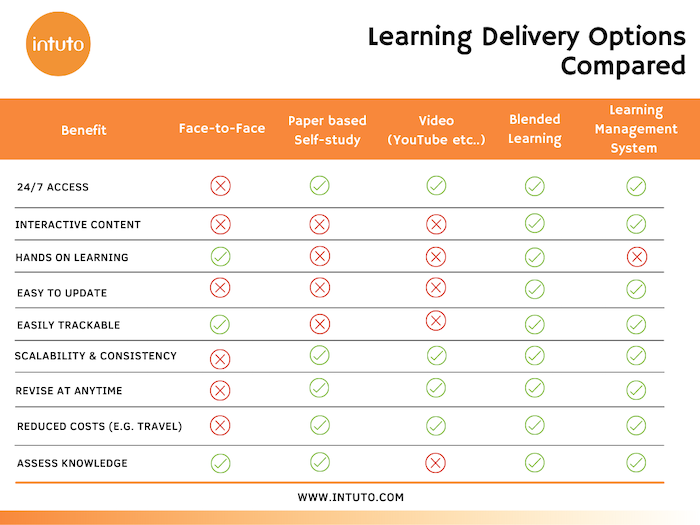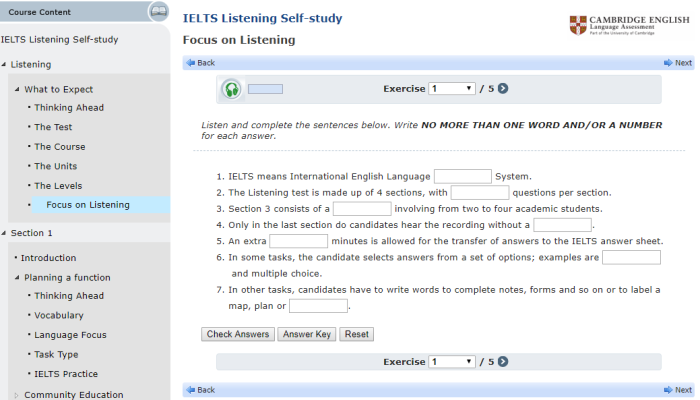Evolution of eLearning - our experience from 2000 to now!
The Beginning 20 years ago, when eLearning was in its infancy, getting content out of a subject matter expert’s head and into an online format was...

There is no doubt that 2020 was a year that changed how people interact in many facets of life. One of those is the delivery of training. Technology supported training is nothing new. Online learning and before that computer aided learning (in one form or another) has been around since the 80s but it’s only been in the last decade or so that mobile devices, ubiquitous high speed internet and online software has put this sort of technology within reach of most business.
Despite these infrastructure and technology advancements, there’s been a reluctance on the part of many businesses to consider any form of technology enhanced training. Sometimes that’s because it’s perceived as too hard, or the assumption is that the training would be better delivered face-to-face. Other times it’s because trainers actually like and want to be traveling around the country and they fear technology might replace their role.
Regardless of the reasons, lockdowns, the inability to travel freely and be in close proximity to others means that traditional face-to-face training has well and truely been disrupted. Given that disruption, what are alternative training methods?
Here’s a chart that summarises some of the more common delivery methods:
This is the traditional medium for learning like most of us went through at school. It has the advantage of being highly personalised and adaptable on the fly, especially in small groups or one-on-one training sessions. The biggest downsides are the time/cost involved and the relative lack of scalability and consistency in the delivery of the material. Catch a trainer on a bad day and you may have a totally different experience than on the next.
Training manuals and correspondence study can be effective and has the advantage of being flexible as to when learners can participate. However, the medium doesn’t lend itself to interactivity or engagement in the same way that other delivery methods do. It can also be expensive to update especially on larger print runs which can also mean a bigger upfront investment in editorial oversight.
Video can be highly effective to delivering certain types of training. YouTube and other video services are full of ‘training’ videos to assist budding for D.I.Y.’ers, how-to videos, walkthroughs among a long list of other topics. The key to successful training videos is that it needs to be short enough to keep people's attention while also being technically good. This means you need good lighting, sound, film shots etc. in order to provide credibility and engagement. Video duration is also vital. A 2-5min duration is great; 10-15min maybe okay for more in-depth material. At 20min+ it had better look like a BBC production with A list actors or you’ll lose your audience.
A good learning management system, or LMS for short, provides three key benefits:
The LMS provides excellent scalability, consistency of learning experience and the ability to assess learner knowledge acquisition. The LMS does not by itself allow for hands on learning but, great ones like Intuto, should in some way support a face-to-face learning component.

All of the above delivery options offer some advantages and disadvantages. People often mistakenly think that learning delivery needs to be limited to one channel and one channel only. The reality is that many studies have shown that blended learning often provides the best outcomes for the trainer, the learner and the organisation.
Blended learning refers to mixing up methods of delivery based on the content and type of learning being taught. For theory and rote learning, using engaging interactions in an LMS or video may save learner and trainer time and provide greater flexibility, freeing up face-to-face time, whether that’s in person or over video conferencing, for Q&A and deeper exploration of difficult to grasp concepts.
What’s the best way to deliver training in the current environment? Leap on the e-learning bandwagon, schedule endless video calls, or give up on training for now in the vain hope that things will soon go back to normal? The answer isn’t always clear cut and depends on a wide range of factors including:
So what’s the best way forward?
A good place to start would be looking at the content you’re delivering. Are you delivering content that involves developing manual skills? Take for example making a coffee using an espresso machine. You can help familiarise learners with the machine, the terminology, the process and expected outcomes all remotely. That may well be fine and good for amateur baristas. However, if you’re a franchise coffee chain you’re going to want your baristas 'in training' to practice making the real thing and then you’ll probably want to try the results of their efforts before you let them loose on your customers.
Likewise if you’re in healthcare and wanting to teach patient injections or catheter insertion - while the theory, patient communication and expected outcomes can all be learnt through self-study, the execution is something you’d want your healthcare practitioner to have had some experience under direct supervision before going it alone their first time.
That takes us to learning objectives. If the learning objectives include successful insertion of a catheter or making a coffee of a quality that someone would pay for it, then some sort of invigilated assessment of those skills would be required. If however it was a theoretical based course and the learning objectives were limited to demonstrating understanding of the equipment and terminology then other assessment models such as online quizzes may suffice.
During the last year there have been documented cases of people learning to administer vaccines remotely for Pacific Island communities, something that is typically done in face-to-face environments.[1] In this case, delivering training as e-learning works because the learners are already health practitioners. If the learner was a healthcare assistant who was being taught to deliver vaccines then the foundational knowledge required to deliver injections and the practice of doing so may not exist. This is why the learner themselves and their pre-existing skill level (assumed or otherwise) is a key factor in determining learning delivery methods. While ideally you would provide face-to-face training, if the learner absolutely can’t be there, then online delivery might be the only option.
Can you get away with one person or is it for a team? If multiple face-to-face sessions are required, how long will it take to deliver the material in its entirety? How many hours of repetition of content is required? How much preparation time is required and how much time is required engaging in one-on-one follow up questions? These considerations will no doubt be impacted by the other factors previously mentioned as well.
In this sub-category you need to consider factors such as how many learners you will have, how many training sessions will they need and how much time at each, will travel time be required, or if your delivering by app/LMS how much time will be spent getting them set up with their technology so they can start learning. If face-to-face delivery then will someone need to cover for your learners while they are training? This can be particularly difficult for shift workers such as nurses or doctors in healthcare clinics or hospitals.
There are other costs that you need to factor into your decision making process. Possible travel expenses for parties, venue hire, technology device hire or rebates and many other things.
While the above is not an exhaustive list hopefully it provides a basic framework for you to review your own training needs.
Finally, while we have talked in general about different learning delivery channels and some considerations when planning out what may work best in your training needs, the final consideration is what external support may be required.
Training never occurs in a vacuum. If you are training face-to-face then you need a venue, that venue needs to be booked out, presentable with the requisite support technology to allow you to teach, be it a whiteboard, TV, Internet connection or even just the right number of chairs. If you are using video, can you do it all yourself or do you need an editor, lighting and microphones? If you are building online courses is the editor easy enough for you or your staff to use or do you need expert help in the way of instructional designers, graphical designers or learner technical support in case someone forgets their password at 3am. Don’t underestimate the importance of this auxiliary support as it can make the difference between smooth running, real savings in time and cost, versus sleepless nights and poor learner outcomes.
As such at Intuto we combine an easy to use, full featured learning management system with a total wrap around solution from learning and design support, course loading, project management and learner support to provide a customer experience second to none. But don't take my word for it, give it a try for yourself.
[1] Jackson, L.C. (2021). Inflatable dinghies and Zoom medical training: how a remote Pacific atoll got Pfizer. Guardian News & Media. Available online at: https://www.theguardian.com/world/2021/jul/24/inflatable-dinghies-and-zoom-medical-training-how-a-remote-pacific-atoll-got-pfizer

The Beginning 20 years ago, when eLearning was in its infancy, getting content out of a subject matter expert’s head and into an online format was...

Did you know thatnearly half of Australian adultsengage in work-related online learning? It's no secret that online courses can be one of the most...

E-learning has become a significant player in the education industry, with the market expected to reach $648 billion by 2030. Learning has always...